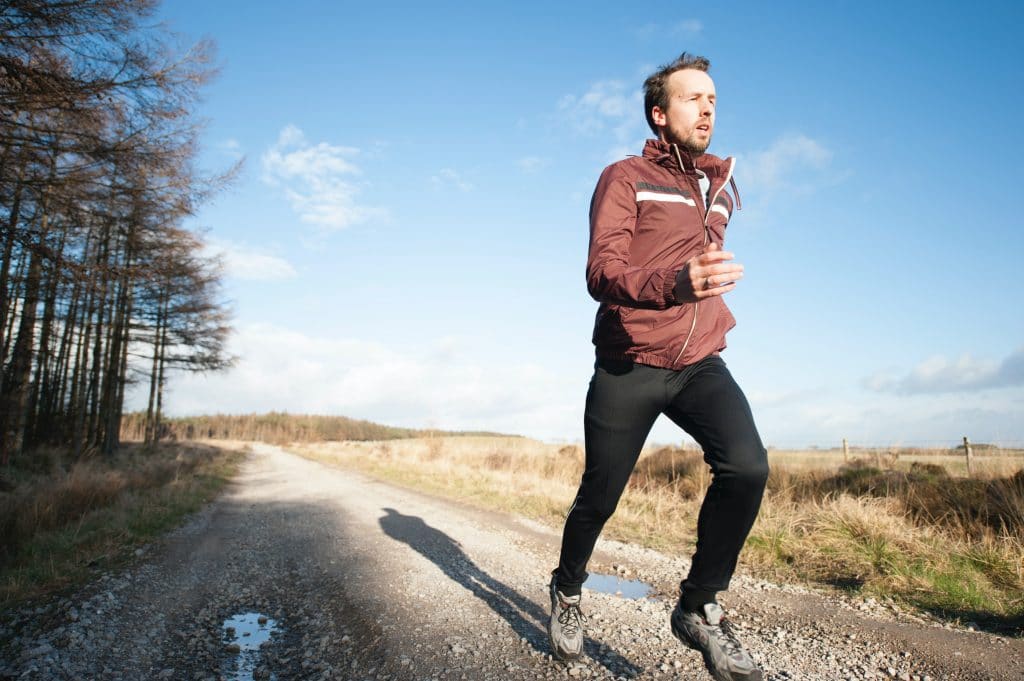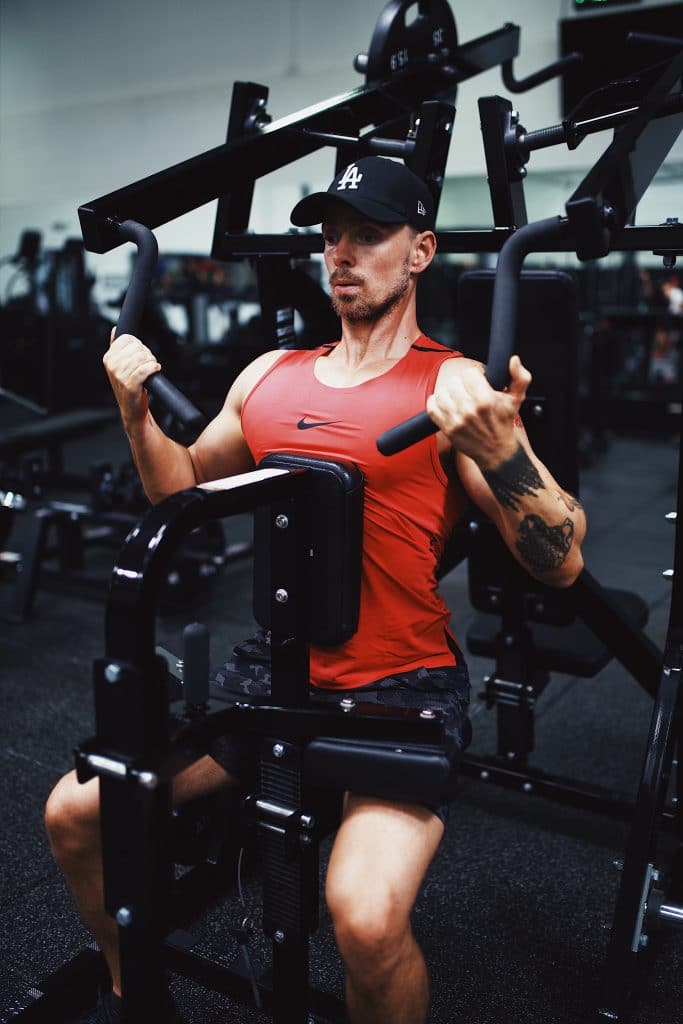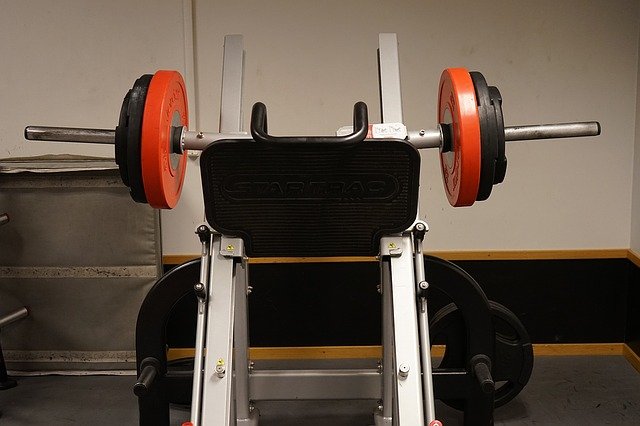Have you heard that doing cardio could ruin your gains in the gym?
That, by doing a lot of steady state cardio—running, biking, hiking—you’ll lose all of your hard earned progress. It’s an idea that gets thrown around a lot.
So what’s the deal? Is doing cardio a bad thing if you’re trying to get stronger?
As always, the answer isn’t simple. It’s nuanced. There are many factors to consider.
One way this belief started was comparing bodybuilders and marathon runners; the physiques speak for themselves. In general, bodybuilders have more muscle mass. Thus, the thought was that cardio is what wasted muscle away. Thankfully, that’s not true.
Okay. Let me clarify—to an extent that’s not true. High amounts of steady state exercise (cardio) can interfere with increased strength and muscle mass (1). So long as you’re eating a sufficient amount of calories though, and can recover from the cardio, then it likely won’t be of much detriment, if at all.
Plus, for most everyone reading this, I’d wager, your goal is not to get as strong as possible while ignoring everything else. You might be looking for fat loss, muscle gain, or to get stronger—not maximal strength at the expense of other qualities.
Because here’s the thing: cardio actually improves your strength training sessions and helps you train harder.
Now, how can that be? After all, it’s been thought that strength training and cardio live in opposite worlds. How could doing more cardio help increase your strength?
Let’s dig into how cardio helps us get stronger by starting with a story.

The Confusing First Day At The Gym
Leroy pulled on the cold, metal handle of the door to the gym he just signed up for. He approached the welcome desk, was greeted by the front desk staff, scanned his card, then walked onto the gym floor.
He stood there for a moment, his eyes open wide with a look of confusion plastered on his face for all to see, looking at a sea of iron machines. It was overwhelming. Unsure of what to do, he walked over to the nearest one. Then, Leroy plopped down on the leather seat of the lat pulldown machine and pulled it up and down for a few reps.
When Leroy got off the machine, he noticed he had been approached by a woman he didn’t know. She had on a black shirt with a name tag, which read: “Lisa, Personal Trainer.”
“How are you doing sir?” she asked.
“I’m doing okay,” he said. “Just trying to figure out how to use some of these machines. It’s my first day.”
“Your first day?” she said. “Welcome to the club! If you’d like, I’d be happy to show you how some of these machines work.”
“Sure, that would be great,” Leroy said.
Lisa showed him the leg press, chest press, and the row machine. He became comfortable with them quickly and left the gym feeling more confident about coming back next time.
A few weeks passed before he saw Lisa again.

The Cardio Conversation
Leroy sat down on the Leg Press machine, pulled the metal pin out of the weight stack to adjust the weight, then got to work. After a set of 8 reps though, he felt gassed.
Lisa saw this and approached him. “Hey Leroy,” she said, “how are you feeling today?”
“I’m doing okay I guess.” He stood up, placed his hands on his knees, and took a few breaths. “These machines kick my butt. I’m so out of breath.”
“They’re tiring for sure,” Lisa said.
“Yeah,” Leroy said. “It sucks. I just want to get stronger, and bigger, but I’m so out of breath after a few reps.”
“Can I offer you some advice to help, Leroy?” Lisa asked.
“Sure,” he said.
“I understand you want to get stronger,” she said. “But I’m curious, do you do cardio as well?”
“Oh, definitely not,” Leroy said. “I don’t won’t to lose all my hard work.”
Lisa got curious after hearing that. She asked him some questions about it. It seemed Leroy had been told that cardio would ruin his progress because it burned too many calories, and it would cause him to lose muscle mass.
Lisa asked if she could offer him some more advice, to which he said yes.

“I understand your concern,” Lisa said. “ You don’t want your hard earned progress to be wasted, but I assure you, that won’t happen. In fact, cardio will help you get stronger.”
“What do you mean?” Leroy asked.
Lisa then said, “It’s true cardio could possibly be a bad thing for getting stronger, but it’s rare. So long as you eat a sufficient amount of calories, you can still gain muscle mass. Also, unless you do tons and tons of cardio, you don’t have to worry about it negatively impacting your strength training. It takes a lot of cardio for that to happen.”
“Huh, interesting.” Leroy lifted his hand to his chin, as if deep in thought. “That makes sense. But how does cardio help me get stronger?”
“Great question,” Lisa said. “It seems counterintuitive but it’s true. Cardio helps us improve our aerobic capacity, and when we have a higher aerobic capacity we can do more exercise in general.
For example, you mentioned being out of breath on the leg press. Having a greater aerobic capacity from doing steady state cardio, as well as some high intensity interval training, would help you recover between sets of exercise and workouts more quickly. You may be able to do all 8 reps without feeling gassed, and be able to do more reps or sets in the workout.
“I get it now,” Leroy said. “By doing cardio I’ll be able to do train harder and recover more quickly. That’s helpful. Thank you!”
Cardio And High Intensity Interval Training: Both (can) Help
The myth that Leroy had believed is an easy one to fall for: that cardio negatively impacts your strength training. And you, dear reader, may still be doubting that cardio helps you get stronger, or even that it’s beneficial in general. And I get that. Let me explain it in a different context to help.
It’s winter time. Which means there might be snow. Woohoo!
Less “woohoo-ey” though, is having to shovel a smorgasbord of snow. Does being strong help you to shovel? Absolutely. But how much will you really get done if you get gassed after a minute or two?
Having a greater aerobic capacity from doing cardio allows you to use your strength for longer before tiring. You’ll be able to shovel more snow because you sustained your shoveling for longer. And, if you do take a break, then you’ll recover more quickly and can get back to it sooner.

Also, let me clear something up here: high intensity interval training helps build our aerobic capacity too. That doesn’t mean steady state cardio—what we refer to as cardiac output training—isn’t important; cardio is important and we recommend it to our members all the time.
Typically, this consists of a session anywhere between 20-45 minutes if they’re just starting out, or upwards of 45-90 minutes (or more). They might go hiking, biking, walking, or anything else they enjoy doing.
In the gym however, since our client’s time is limited, we can get more bang for our buck by doing a few minutes of high intensity interval work. We wouldn’t have them spend 45 minutes out of their 60 minutes on a bike—that’s not an efficient use of their time with us.
But cardio is still recommended to help build their overall aerobic capacity so they get more out of their strength training session—and, most importantly, their life.
What Now?
In summary: having a greater aerobic capacity allows you to recover faster between sets and workouts; and since you recover more quickly you can potentially get more training in. This helps in your daily life as well.
Maybe you have to move some furniture to a new house. Maybe that’s playing with your kids or grandkids, playing a pickup game of softball or baseball. Or, maybe flying a kite one sunny day. Regardless of the activity, having greater aerobic capacity from doing cardio and some high intensity interval training can help.
Remember: doing some cardio won’t ruin your strength training journey—it will enhance it.
And if you’d like help with figuring out exactly how much strength training, high intensity interval training, and cardio is best for YOU and YOUR GOALS… claim your free week below!
Sources:
You might also like:
- Earning It With Exercise
- Why Soreness Isn’t The Goal Of Working Out
- One of the MOST Important Components of Getting Stronger, Leaner, and Fitter
- What’s Best: Full-Body Routine or Body-Part Routine?
- Stop Wasting Your Time with Stretching (and what to do instead)
- Unilateral Training: Worth It or Waste?
- How To Get Your Workout In (Even If Your Time Is Limited)
